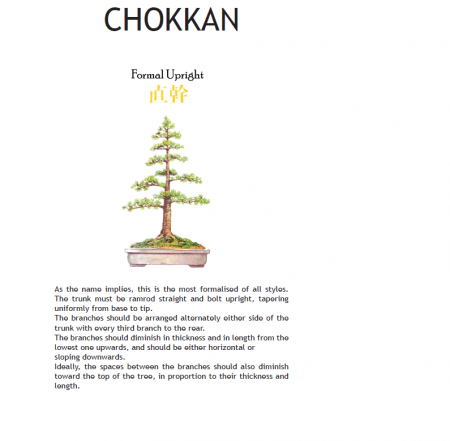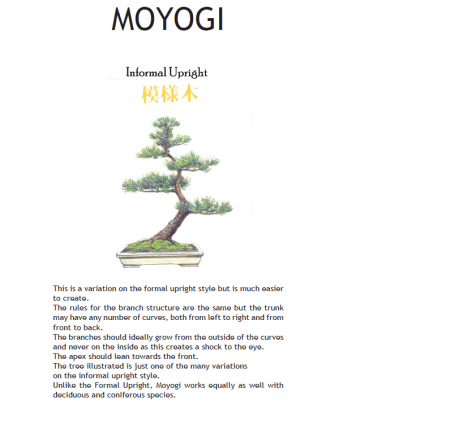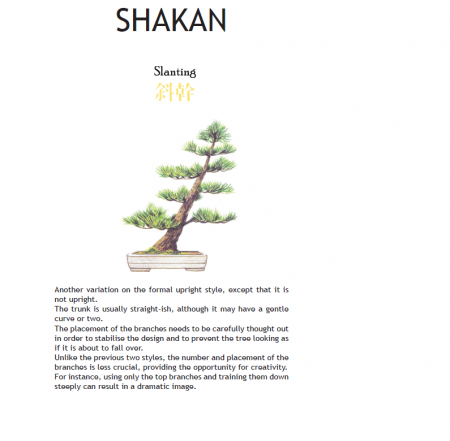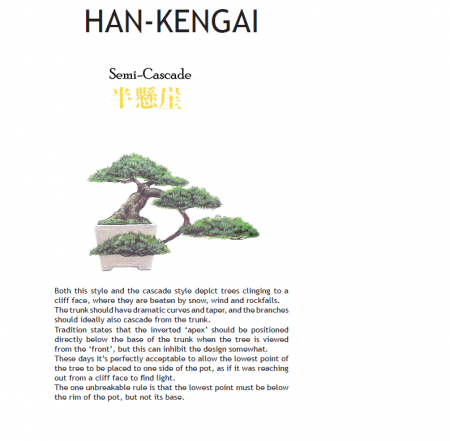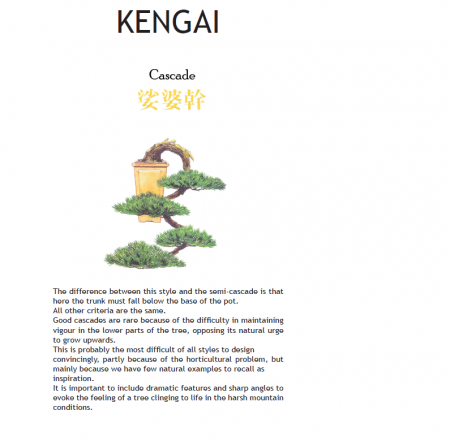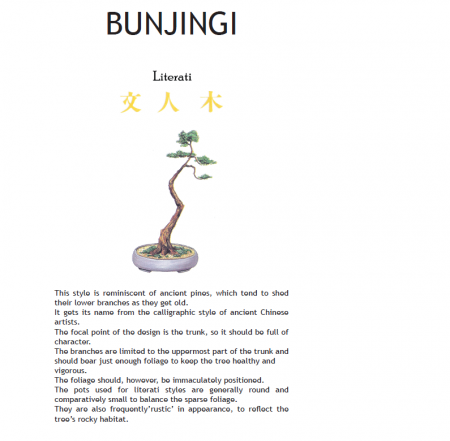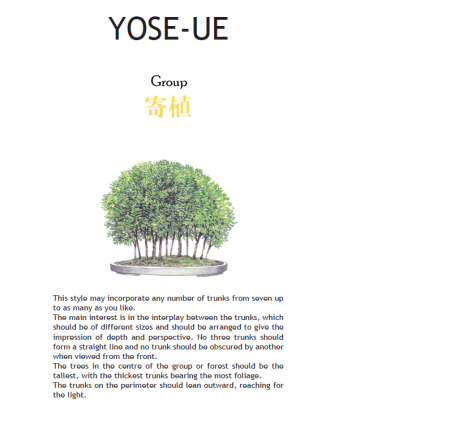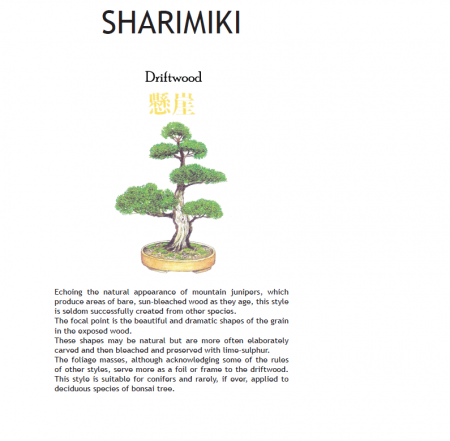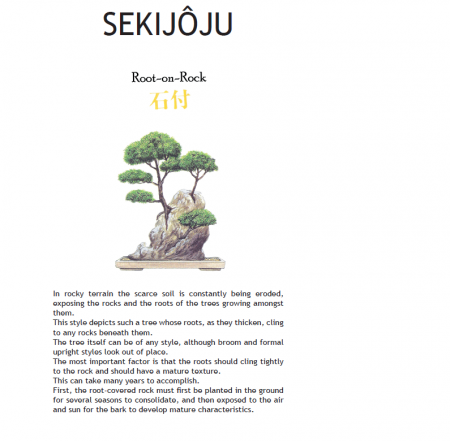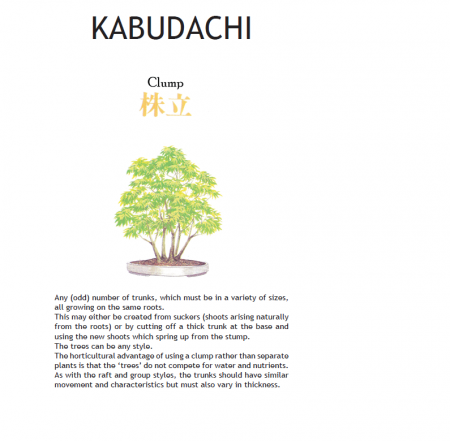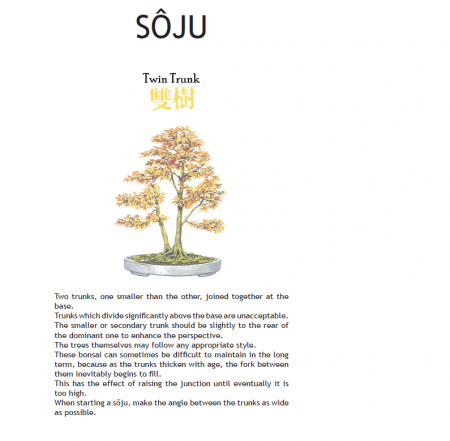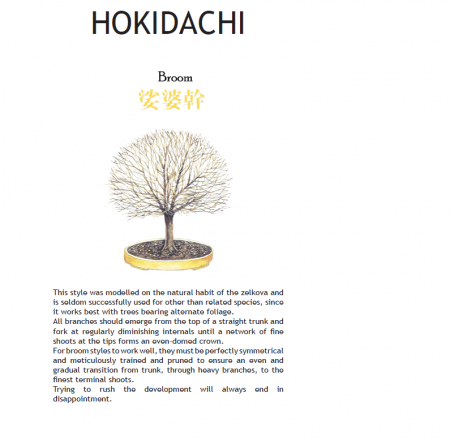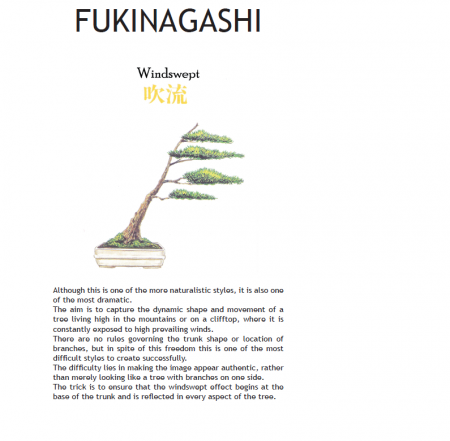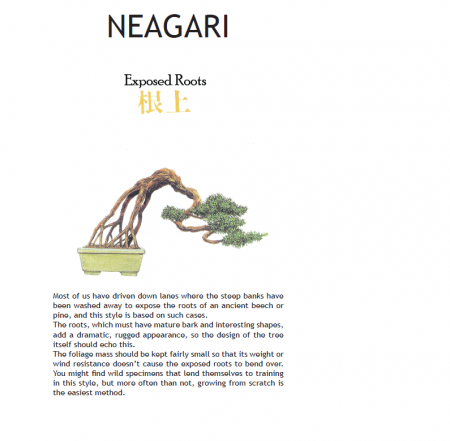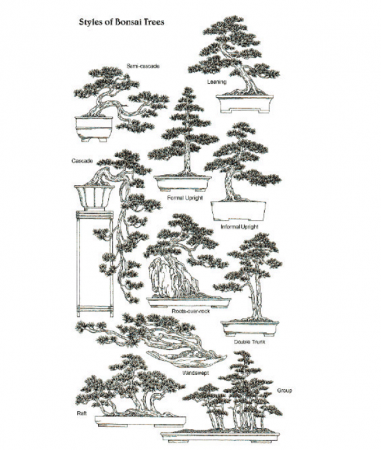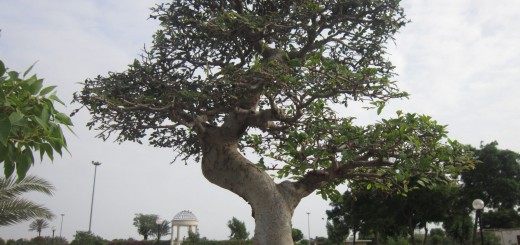Bonsai Styles
Styles
All trees in nature have specific style due to their location, climate, altitude, and their planted position (near and under a big tree or in open space). Since Bonsai is an art which depict the nature in a small size and in living condition so it has to be created according to the styles found in nature and should be kept in shape so as to get full beauty and pleasure.
There are almost 50 bonsai styles including the classical, non-classical and African styles. Five basic styles are recognized in Bonsai design and these are classified according to the angle of trunk. There are other non-classical styles as well which are governed by the overall shape, number of trunks etc. Thus each style is derived from its full-sized counterpart found in nature. In Africa, trees growing in wild are of different styles due to different climate and land, the African bonsai expert Charles Ceronio was so impressed that he created six African styles which are described in his book “Bonsai Styles of the World”.
The famous styles of Bonsai
Formal Upright (Chokkan)
Informal Upright (Moyogi)
Slanting (Shakan)
Semi-Cascade (Han-Kengai)
Cascade (Kengai)
Literati (Bujingi)
Group (Yose-Ue)
Drift Wood (Sharimiki)
Root-On-Rock (Sekijoju)
Clump (Kabudachi)
Twin Trunk (Soju)
Broom (Hokidachi)
Windswept (Fukinagashi)
Exposed Roots (Neagari)
Another view of the Bonsai Styles
This is not the end, this is the beginning – Bonsai Styles of the World by Charles Ceronio
The above mentioned are not the only styles. As mentioned earlier South African expert created more African styles and have published them in his book “Bonsai Styles of the World”
If you want to read about African styles of Bonsai, please visit: African Style by Charles S. Ceronio

